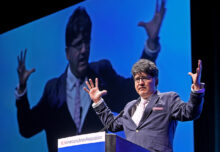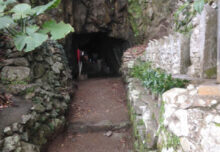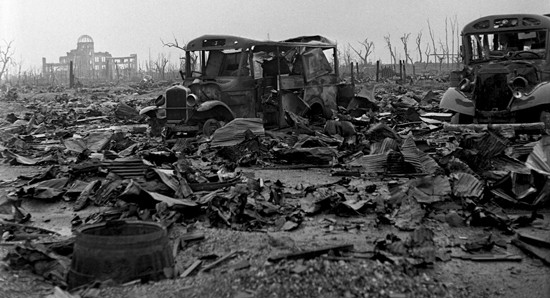
Originally written for North Country Public Radio. Read on NCPR here.
Azusa doesn’t send me many emails, maybe one every five years, so it was exciting to see her name in my Inbox. We met over thirty years ago when I lived in Hokkaido, the northernmost island of Japan. Azusa was still in college, I had just graduated. She knew English and was involved in social justice work.
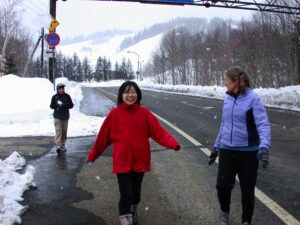
Azusa smiles on a snowy walk in Hokkaido, March 2006
In this new email Azusa wrote that the Hibakusha of Hokkaido, the atomic bomb survivors, were compiling a booklet of testimony to send to the UN. The material would be distributed during the month-long Nuclear Non-Proliferation Treaty meeting in April and May. She included an English translation of an oral testimony by Ms. Shizuko Saito, a 92-year-old woman who had survived the bombing of Hiroshima. Ms. Saito had never before told her story. Azusa wrote: “I tried to translate it but my English is so poor. Will you read it and check it out?”
Of course! I traveled to Hiroshima and walked through the Peace Park where the burned, skeletal remains of Hiroshima’s city hall are now surrounded by a modern city. I was sickened by the photos in the museum, photos of burned bodies and of the massive destruction of Hiroshima. About 70,000 people died the day of the bombing and twice that many died shortly after. If I could help in the smallest way to help avoid another nuclear bombing, I would.
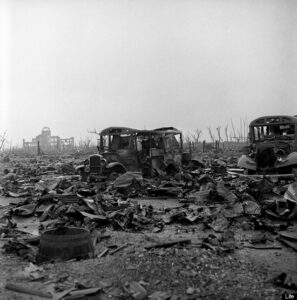
Shizuko Saito lived 2 km from the epicenter of the bombing
Saito Shizuko was 22 years old on August 6, 1945, a dressmaker in a village not far from the center of Hiroshima. She tells of the clear morning, then the darkness after the bomb and the people with burned clothing and peeling flesh. Leaning against her sister, she walked away from the burning city and later suffered from radiation sickness. My edit of her last paragraph reads, “Seventy years ago I had no idea what the atomic bomb was. If I had known, I might have reacted differently on that terrible day in Hiroshima. I am against war and do appeal for a total ban on nuclear weapons.”
A couple of weeks after Azusa’s email a package arrived from Japan. It included stapled papers with the title “Voices from Hibakusha — from Hokkaido to the United Nations.” On its thin pages I read story after story of the horrors of that day in August, 1945. Of the greasy, black rain. Of the dying people desperate for water. Of the strange illnesses that have followed the survivors through their lives, and the discrimination they encountered at school or at work. At the end of each testimony the writer asks for the abolition of nuclear weapons. Some request Japanese lawmakers keep Article 9 of the Japanese Constitution intact. The article says, “the state formally renounces the sovereign right of belligerency and aims at an international peace based on justice and order.” In 2014, Article 9 was weakened when the Japanese government gave more power to the Self-Defense forces, allowing them to engage in combat if their allies are attacked. The USA supported this move.
On August 6, 1945 Shigeru Sato was 17, a soldier digging bomb shelters. His position on a crowded train saved his life, though he still had burns and illnesses. He ends his testimony this way: “70 years later, Hiroshima revived so much that no one can feel the taste of those days. However, when it comes to August, I recall what happened that day.”
No one can feel the taste of those days.
The sovereign right of belligerency.
Thank you, Azusa, for helping me feel the taste of those days, for reminding me to keep working for the sovereign right of peace.
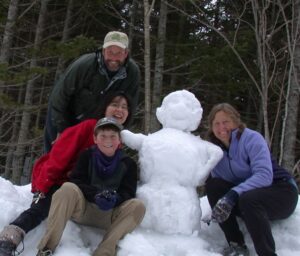
Tom, Azusa, Jay, SnowWoman and Betsy on a snowy day in Hokkaido, March, 2006


